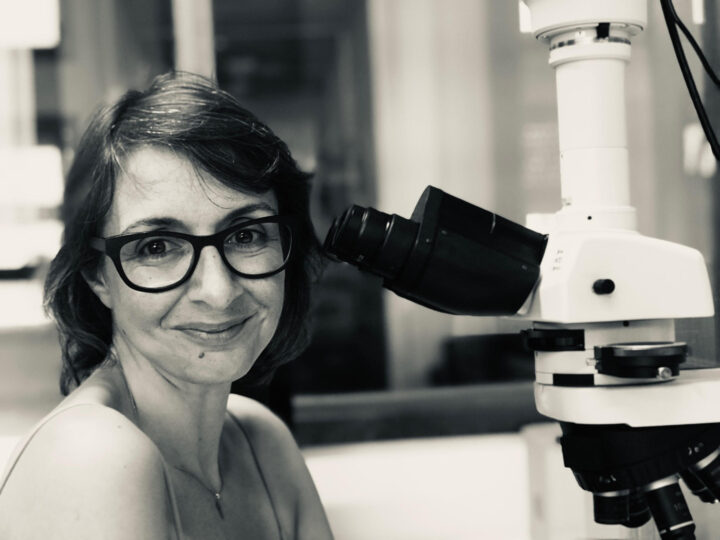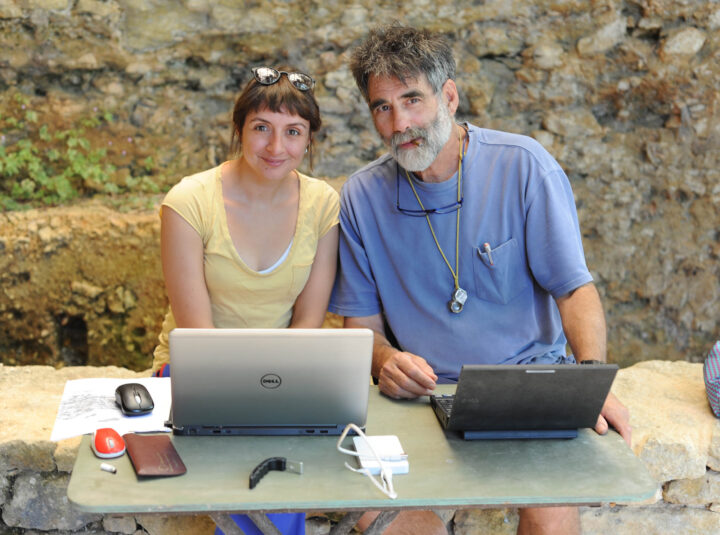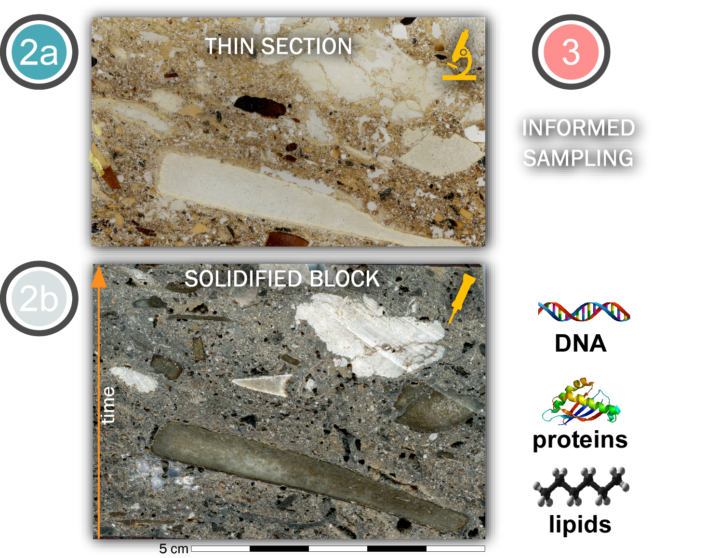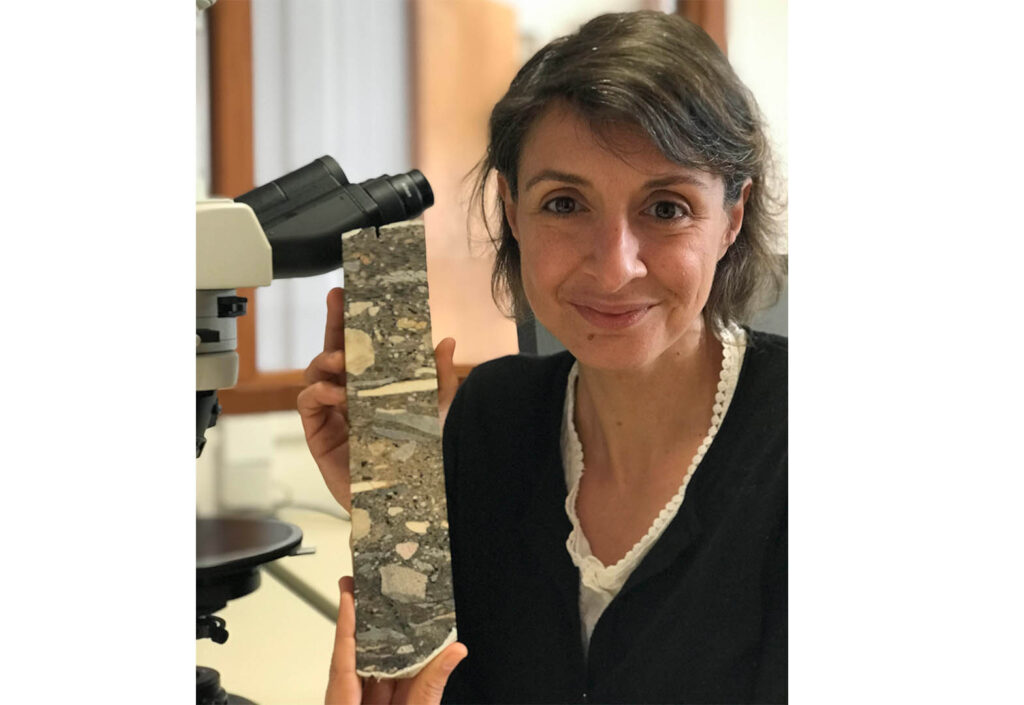I was certain: I wanted to know about our origin and evolution. To do so, he thought about studying stone artifacts, but the earth turned him around and it became his passion. That's why he went to the United States and with her he was a researcher at the Max Planck Institute in Germany. In 2022, she was the first Portuguese researcher to win a scholarship from European Research Council (ERC). She is a researcher at Interdisciplinary Center for Archeology and Evolution of Human Behavior (ICArEHB) from the University of Algarve, where he is also a professor.
It's ten o'clock on a mild morning in the Algarve. In the courtyard of the ICarEHB, several scientists are sitting at a wooden table. At first glance, it would seem that they are taking a coffee break, but in fact it is a work meeting coordinated by Vera Aldeias.
With enthusiasm and relaxation, the strategy for one of the research projects of one of the most brilliant archaeologists of her generation is outlined. These are also characteristics of Vera who, simply but in a very captivating way, talks about her complex research, financed since 2022 by the ERC, and which seeks to understand what happened to the Neanderthals through the study of sediment samples collected from archaeological sites and the DNA, proteins and lipids preserved in them.
Vera Aldeias began her studies in archeology at the Faculty of Arts of the University of Lisbon, in 1998, a year marked by the discovery of the Lapedo Child, which precipitated a series of changes in the way Prehistory was investigated in Portugal, namely the creation from the Research Center for Human Paleoecology and Archaeosciences, where Vera would begin her specialized studies in Geoarchaeology, a discipline that combines Geology and Archaeology.
In her first years at college, Prehistory quickly became her passion and the questions that always moved Vera quickly emerged. She wanted to understand the mystery of who we were, before we were us, by putting together the pieces of an intriguing puzzle with the help of other sciences.
It was still uncertain how she would answer all the questions that fascinated her. But it was certain that she had the characteristics that mark her entire career: curiosity, persistence, autonomy and the ability to leave her comfort zone.
César Neves, a college friend, remembers that Vera didn't go to classes much, but «she learned all the material and was able to explain it well in the tests she took», she was extraordinarily focused and read more than everyone else, sharing everything that I could have good conversations. Coffee conversations are important to Vera, «I love a good conversation, the back and forth of meaningful dialogue, it doesn't even have to be very intellectual or scientific».
He discovered his passion for sediments on an excavation. When you dig, you remove earth, and I was doing this thoughtlessly when “Professor arrived. João Pedro and began to tell what that landscape was like in the past, when and where those sediments had come from, how they had gotten there, whether it had been the water, whether it had been the wind...».
Then came the fascination of a lifetime. He thought at that moment: «We are here taking all the earth and our information is based on the earth» and remembers «for me it was a complete opening to the world of geology, which is what we call Geoarchaeology.»
Then began an unstoppable story of dedication to science. The earth stopped being something that was dug up without much attention being paid to it, and became the center of all his attention.

At the turn of the century, the archeology course was still very linked to History and without much possibility of learning about geology, a discipline that would become so important, even though I always repeat «I'm not a geologist, if it's Jurassic geology I have zero interest, because what I want is to understand human behavior that also generates land and without these studies we lose many traces of human activity preserved in sediments».
When she realized that she wanted to study geology, she looked for it in other departments at the university, she tried to learn about rocks and minerals in the geography course, and when she wasn't satisfied even there, she found solutions.
César Neves recalls that Vera «went to knock on the door of the geology department of the Faculty of Sciences and said: I have a problem, I can't study because the geography department doesn't give me rocks and minerals and I need to see these rocks ».
They opened their doors to him and together they got an excellent grade on the geology test. César states that, since he has known Vera, for more than twenty-five years, «she asks a lot, she is always asking questions and is not satisfied with just one answer, even in the simplest conversations».
On the benches at college, I wanted to see granites and muscovites, today, in the ICArEHB laboratories, he shows, with great enthusiasm, in a powerful electron microscope the thin sheets of sediment from Bacho Chiro, one of the most important archaeological sites in Europe, as it contains the remains physicists of the oldest Sapiens (our species and the only one that currently inhabits the entire planet) who arrived here from Africa.
From these slides, with his team, he will extract and analyze DNA, proteins and lipids to try to understand what happened at this very important moment in our history.
The researcher explains that «there are communities Sapiens that arrive in Europe, at a time when there are still Neanderthals, but we also know from genetics that these are not the populations that later remain in Europe. They themselves also leave and become extinct here. And then others arrive. Therefore, it is almost like sea waves on a beach, which come and go in a series of interactions.” He is interested in understanding these interactions in thin layers of earth formed in a short period of time, 5 thousand years, which «in geological terms is the blink of an eye».
Your project, Matrix, funded by the ERC, aims to map the replacement of Neanderthals by early modern humans by looking at biomolecules in sediments that are invisible to our eyes.
It also seeks to answer other questions, since “we still don't know very well which particles in the sediments provide us with DNA and whether they vary from site to site. And they are small bones or remains of excrement or it is free DNA that is attached to minerals such as clay. We do not know. We also don't know under what conditions this DNA was deposited and how it is best preserved, all of this is crucial because the DNA in the sediments cannot be dated».
The answers will make it possible to create a single database. This is also an objective for this researcher who says: «I really like data, I like the scientific method and going beyond the discussion of ideas that often characterizes archaeology».

Building bridges between different sciences is a skill that he masters quite well. Paul Goldberg, geologist and professor at Boston University, supervised her doctoral thesis and still works with Vera Aldeias today, saying that «she is very good at synthesizing and can collect information from many different things and put them together. She is good at Geology, which she learned from scratch and knows archeology in depth.”
For this researcher, the 2 million euro grant he received in 2022 it was no surprise, «for such a persistent and focused researcher it was expected».
The idea for this “high-risk, high-reward” project, as Vera explains, came about during the five years she worked as a researcher in the Department of Human Evolution at the Max Planck Institute, in Germany, and where she says she had the privilege of working “ surrounded by people from all areas who have truly fantastic minds, which makes us grow a lot. It's all in the same place and very much with this idea of “let's do things that have never been done”».
In fact, extracting biomolecules from samples collected at archaeological sites and transformed into blocks, even several years ago and, in the meantime, stored in laboratories and museums, has never been done. Vera and Paul thought outside the box and proposed to their Genetics colleagues to integrate Geoarchaeology.
They didn't know if it would work, because the process of treating the samples could alter the preservation of the biomolecules. But they tried and, «when we realized that all the block preparation processes did not influence, on the contrary, they even helped to preserve the DNA and helped with sequencing, then it was the feeling of: wow, this changes everything!! It was a bomb!”
Before being a researcher at Max Planck, she spent six years studying in the United States, where she received her PhD at the University of Pennsylvania. It was a challenge to leave her comfort zone, go far away and study in an Earth Sciences department when all her training had been in Humanities. “The first few years were tough,” she says.
However, this experience was decisive in growing as a scientist and as a person. Here he found the mental freedom to have his own ideas, discuss them in an environment without developed hierarchies and which welcomes opposing ideas, stimulating argumentation. «I was motivated to ask questions and I was fortunate not to be forced to think in the same way as my supervisor», says Vera and adds: «there is, there, one thing that I think is important, which is always this idea to push for innovation, not do more of the same and always be able to adapt to new things.”
In total, he spent 11 years outside Portugal until he returned in 2017 to the University of Algarve, where he directed the ICarEHB research center for a year. Not because he hasn't tried to stay in his country. He tried several times to apply for grants from the Foundation for Science and Technology (FCT), but was unsuccessful.
Today she says, very calmly, that «all of this wasn't bad, because it forced me to leave and maybe I wasn't ready for those scholarships either». Furthermore, for this researcher, the normal thing in the academic world is not to succeed, «the chances of success are at most 10%. This means that normally we have to compete 10 times before we succeed».
Her college friend, César Neves, says with humor that «I always tell Vera that FCT was her best friend, because it took her to go abroad, she competed here, it didn't work out, and she always went on to better things. with the conviction that it doesn’t work here”.

Not having results with the FCT is water under the bridge, since in 2018, she saw her FLAME project on fire in the Paleolithic, being financed, and in 2023 she was appointed to join the Scientific Council of the Arts, Humanities and Social Sciences of this foundation. Her journey leads her to have «opinions on how science should be done, especially because I have been abroad and in various places and I think we have room to improve if we listen to Portuguese scientists».
Regarding the way science is done in Portugal, he confesses that «things are done, but it is always a lot of struggle and delay. It's not in the most efficient way, this is important for cutting-edge science projects and so we are easily overtaken».
He further considers that «Portuguese Universities, to a certain degree, are not prepared, although they may be effective, they are not efficient», there is too much bureaucracy, and adds that «there are many people to support, but overall the machine does not work to help us» .
Despite this, in 2023, in the update of the “World's Top 2% Scientists list” ranking, made available by Stanford University (California, USA), 18 scientists from the University of Algarve were among the most cited worldwide. Of course Vera is one of these scientists.
From the outside looking in, it could be that the path was always upward, after all Vera is only 43 years old, but it wasn't, there were moments of doubt. The researcher says that «We are always doubting ourselves, but we move forward because we grow with doubt and that is an important part of a researcher's journey». If there were any doubts, thinking about giving up is something he categorically says has never happened to him.
It is noted.
Today, Vera has the conditions to develop her innovative idea that will take the DNA revolution in Prehistory even further. It's every scientist's dream.
The hard work, creativity and ability to build bridges between various sciences were recognized, but they were there from the benches of the Faculty of Arts. Even so, if you ask her what the happiest moment of her career was, Vera travels back to 2005, when she was not even a PhD student, and in the excavation of Jebel Irhoud, in Morocco, she discovered what is now known to be the oldest skull of Homo Sapiens. Vera describes this as «a moment that was spectacular, it didn't even have an impact on my career, but I was the excavator who discovered it and I'm even thanked in the publication they published in Nature!»
It is rumored among archaeologists that Che Guevara, on his travels through Africa, met archaeologists and said of them that “they are eternal children”. This is a little bit of what Vera keeps within herself, she does science at the highest level, but she talks about it with the sparkle in her eyes that we only find in those people who move with the enthusiasm of a child full of curiosity and joy.
Author: Sara Cura is a Science Communicator


















Comments